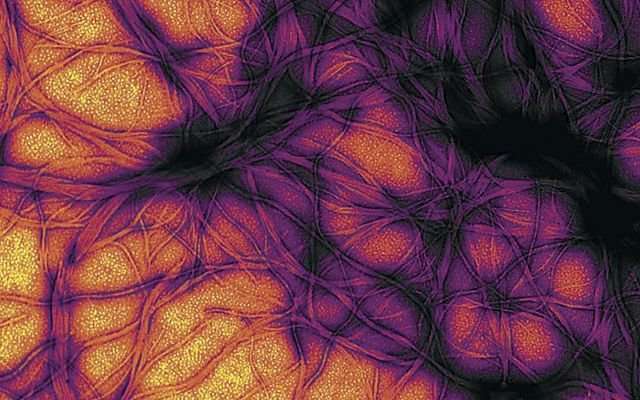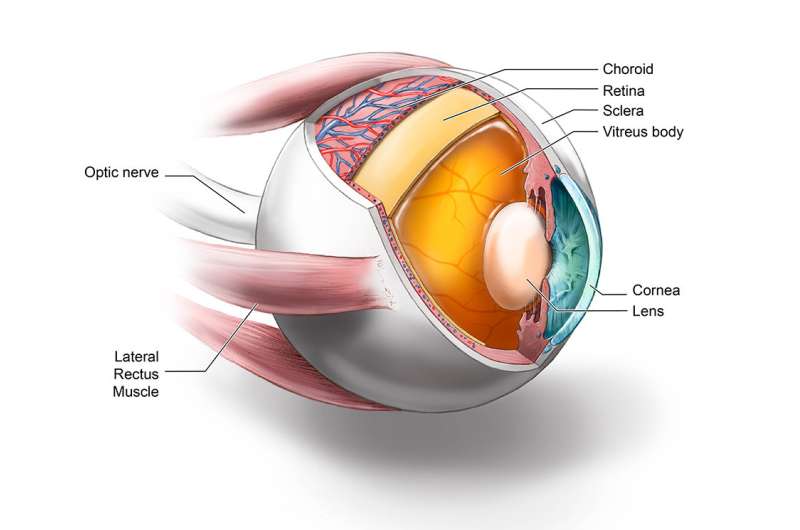Researchers find infectious prions throughout eyes of patients with deadly sporadic Creutzfeldt-Jakob disease

By the time symptoms of sporadic Creutzfeldt-Jakob disease (sCJD) are typically discovered, death is looming and inevitable. But, in a new study, researchers at University of California San Diego School of Medicine with colleagues at the National Institutes of Health and UC San Francisco, report finding tell-tale evidence of the condition's infectious agent in the eyes of deceased sCJD patients, making the eye a potential source for both early CJD detection and prevention of disease transmission.
Writing in the November 20 issue of the journal mBio, co-corresponding author Christina J. Sigurdson, DVM, Ph.D., professor of pathology at UC San Diego and UC Davis, and colleagues discovered high levels of prions in the eyes of 11 deceased patients, all with confirmed sCJD.
"Almost half of sCJD patients develop visual disturbances, and we know that the disease can be unknowingly transmitted through corneal graft transplantation," said Sigurdson. "But distribution and levels of prions in the eye were unknown. We've answered some of these questions. Our findings have implications for both estimating the risk of sCJD transmission and for development of diagnostic tests for prion diseases before symptoms become apparent."
Prions are misshapen forms of a normally harmless protein. It is not known what causes the normal prion protein to misfold and become pathogenic. In humans, prions accumulating in the brain produce lesions that can lead to rapidly progressive neurodegeneration. Patients commonly die within a year of diagnosis.
Sporadic CJD is the most common form of the disease (85 percent of cases); patients have no known risk factors. Hereditary CJD involves a genetic mutation associated with CJD, and approximately 10 to 15 percent of CJD cases in the United States are hereditary. In acquired CJD, the disease is transmitted by exposure to the brain or nervous system tissue, usually through certain medical procedures, such as corneal grafts. Rare cases involve persons eating meat from cattle affected by a disease similar to CJD called bovine spongiform encephalopathy or "mad cow disease."
Sigurdson, with co-corresponding authors Michael D. Geschwind, MD, Ph.D., professor of neurology at University of California San Francisco Memory and Aging Center, Byron Caughey, Ph.D., at the NIH Rocky Mountain Laboratories in Montana, and others sampled eyes and then NIH researchers used a highly sensitive real-time assay called the RT-QuIC test developed by Caughey to measure postmortem prion seeding in different tissues of the eye, such as cornea, lens, ocular fluid, retina and optic nerve. Prions were found throughout the eyes of all eleven tested sCJD patients (who had agreed to donate their eyes upon death), with the highest seed levels in the retina—in some cases only slightly lower than in the brain. Analyses of the eyes from six control samples without diagnosed sCJD were negative for prions.

"Collectively, these results reveal that sCJD patients accumulate prion seeds throughout the eye, indicating the potential diagnostic utility as well as a possible biohazard," wrote the authors.
The RT-QuIC test is used by clinicians to diagnose sCJD in people, usually through cerebrospinal fluid and nasal brushings. The researchers plan to further evaluate its utility in eye tests, and expand to evaluate the eyes of patients with Alzheimer's disease, Parkinson's disease or dementia with Lewy bodies to determine whether aggregated proteins from those conditions are present.
In the meantime, the authors recommended that ophthalmology exams employ either single-use instruments or equipment decontamination procedures to eliminate risk of prion transmission from patient to patient. And they said they hoped the findings would spur greater efforts to develop corneal grafting techniques, such as biosynthetic corneas, to eliminate iatrogenic disease transmission.
More information: Christina D. Orrù et al, Prion Seeds Distribute throughout the Eyes of Sporadic Creutzfeldt-Jakob Disease Patients, mBio (2018). DOI: 10.1128/mBio.02095-18


















